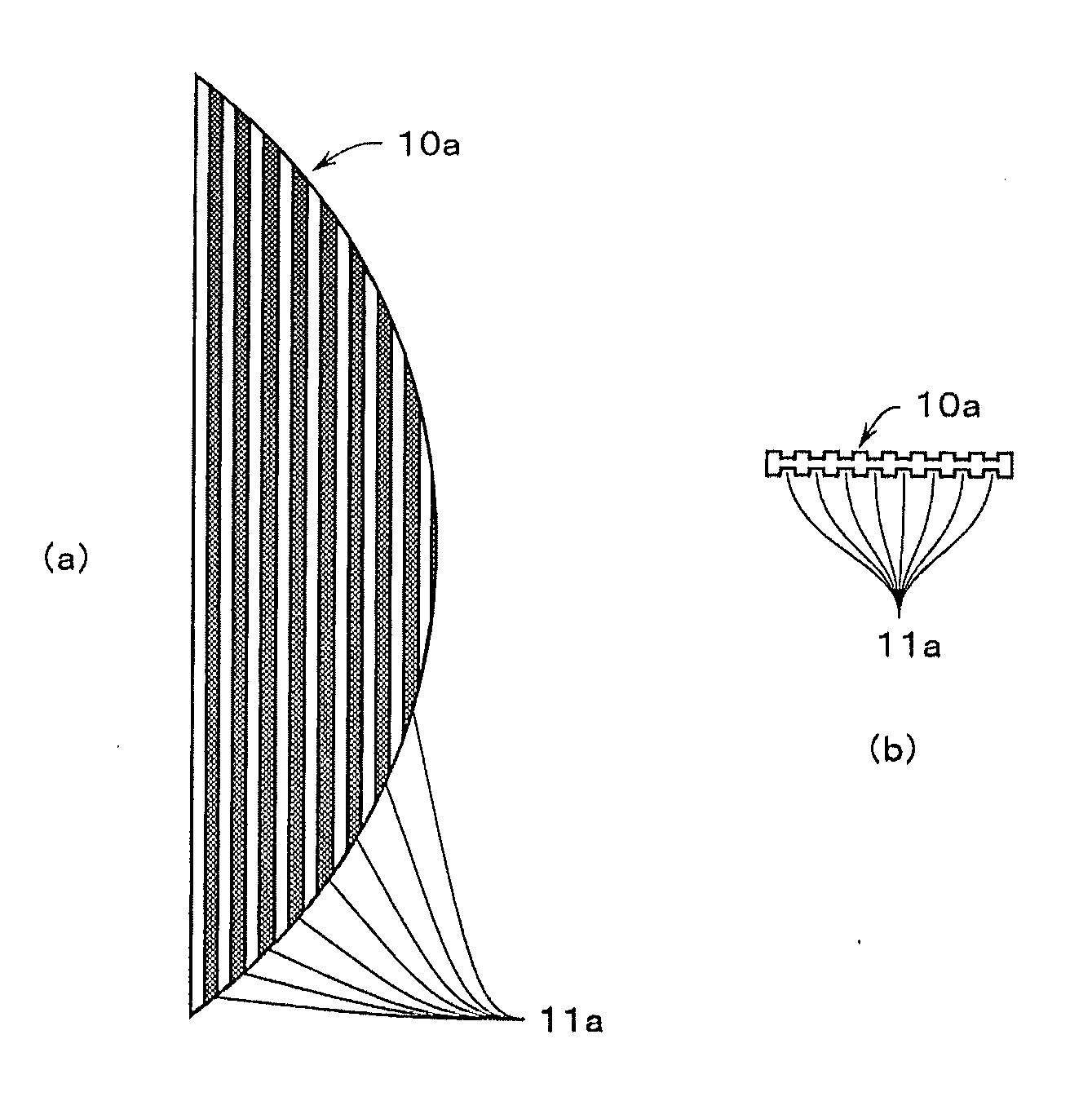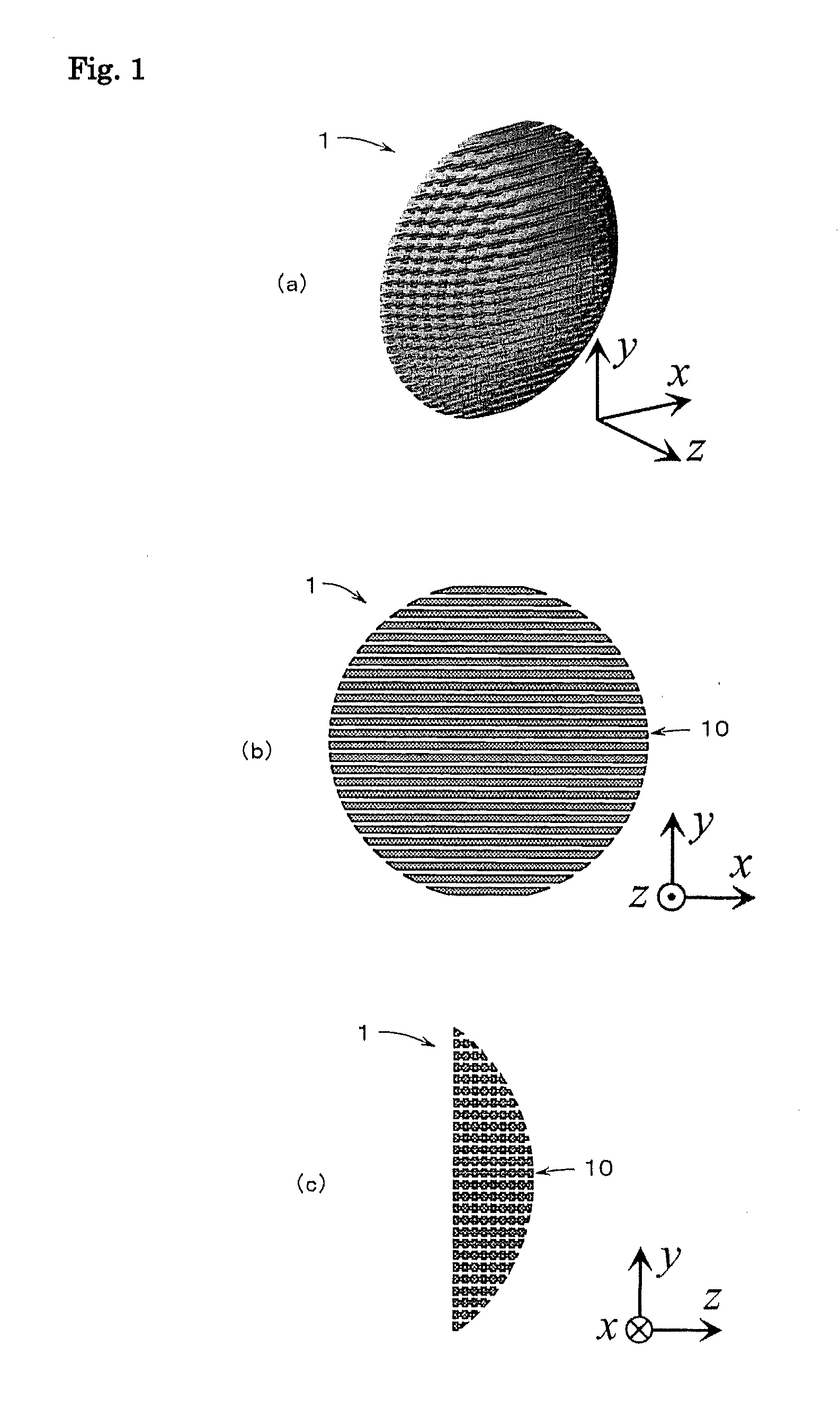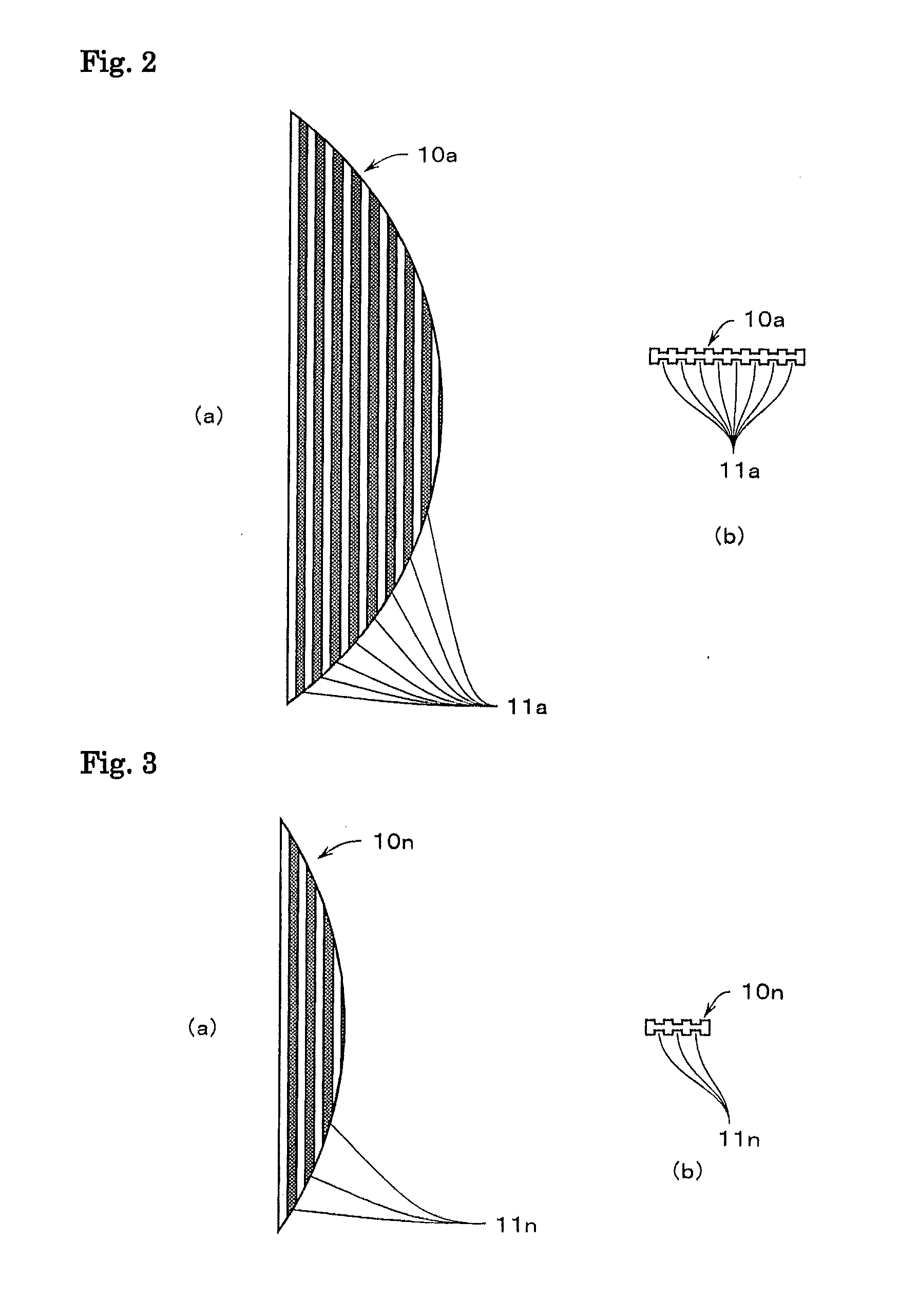Artificial dielectric lens
a dielectric lens and dielectric technology, applied in the field of artificial dielectric lenses, can solve the problems of difficult to achieve or design the desired refractive index n arbitrarily with a material existing in the natural world, and achieve the effect of convenient arrangement of lenses, easy availability of materials, and low cos
- Summary
- Abstract
- Description
- Claims
- Application Information
AI Technical Summary
Benefits of technology
Problems solved by technology
Method used
Image
Examples
first embodiment
[0033]FIGS. 1(a), 1(b), and 1(c) are a perspective view, a front view, and a side view respectively showing the structure of a metal dielectric lens as an artificial dielectric lens of this invention.
[0034]As shown in these drawings, a metal dielectric lens 1 of this invention shown in these drawings is a circular lens with one side surface formed into a planar shape and an opposite side surface formed into a spherical shape. A z-axis is defined as an optical axis of the metal dielectric lens 1 and axes perpendicular to the z-axis are defined as an x-axis and a y-axis. An outer shape of multiple metal plate pieces 10 is such that the respective cross sections of the metal plate pieces 10 are parallel to x-z planes at given intervals of the lens along the y-axis from a lower edge to the center and from the center to an upper edge. The metal dielectric lens 1 is formed by laminating the multiple metal plate pieces 10 such that the metal plate pieces 10 are arranged parallel to the x-z...
second embodiment
[0057]FIGS. 14(a), 14(b), and 14(c) are a perspective view, a front view, and a side view respectively showing the configuration of a metal dielectric lens 3 as the artificial dielectric lens of this invention.
[0058]As shown in these drawings, the metal dielectric lens 3 of the second embodiment of this invention shown in these drawings is a circular lens with one side surface formed into a planar shape and an opposite side surface formed into a spherical shape. The z-axis is defined as an optical axis of the metal dielectric lens 3 and axes perpendicular to the z-axis are defined as the x-axis and the y-axis. An outer shape of multiple metal plate pieces 30 is such that the respective cross sections of the metal plate pieces 30 are parallel to the x-z planes at given intervals of the lens along the y-axis from a lower edge to the center and from the center to an upper edge. The metal dielectric lens 3 is formed by laminating the multiple metal plate pieces 30 such that the metal pl...
third embodiment
[0060]FIGS. 15(a), 15(b), and 15(c) are a perspective view, a front view, and a side view respectively showing the configuration of a metal dielectric lens 4 as the artificial dielectric lens of this invention.
[0061]As shown in these drawings, the metal dielectric lens 4 of the third embodiment of this invention shown in these drawings is a cylindrical lens with one side surface formed into a planar shape and an opposite side surface formed into a spherical shape. The z-axis is defined as an optical axis of the metal dielectric lens 4 and axes perpendicular to the z-axis are defined as the x-axis and the y-axis. An outer shape of multiple metal plate pieces 40 is such that the respective cross sections of the metal plate pieces 40 are parallel to the x-z planes at given intervals of the lens along the y-axis from a lower edge to the center and from the center to an upper edge. The metal dielectric lens 4 is formed by laminating the multiple metal plate pieces 40 such that the metal ...
PUM
 Login to View More
Login to View More Abstract
Description
Claims
Application Information
 Login to View More
Login to View More - R&D
- Intellectual Property
- Life Sciences
- Materials
- Tech Scout
- Unparalleled Data Quality
- Higher Quality Content
- 60% Fewer Hallucinations
Browse by: Latest US Patents, China's latest patents, Technical Efficacy Thesaurus, Application Domain, Technology Topic, Popular Technical Reports.
© 2025 PatSnap. All rights reserved.Legal|Privacy policy|Modern Slavery Act Transparency Statement|Sitemap|About US| Contact US: help@patsnap.com



